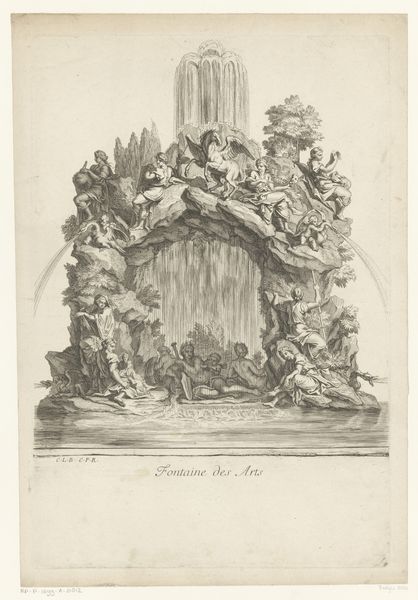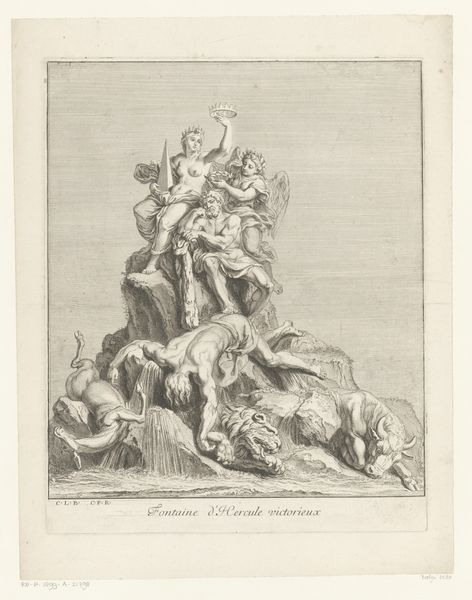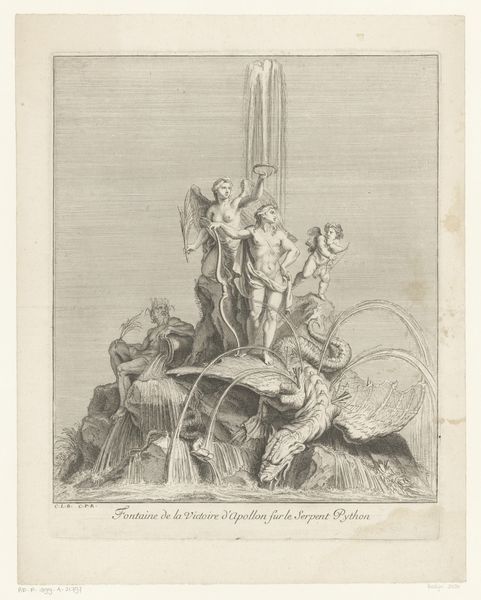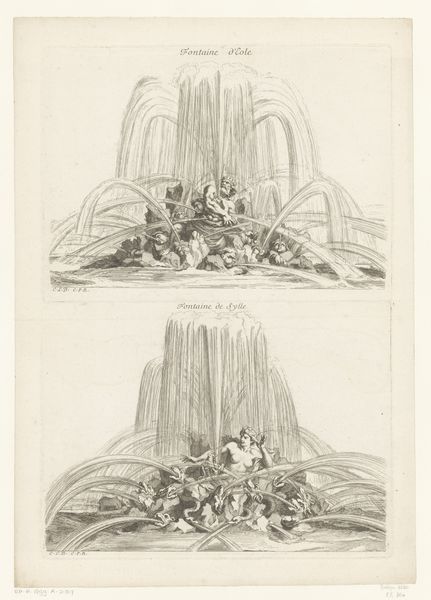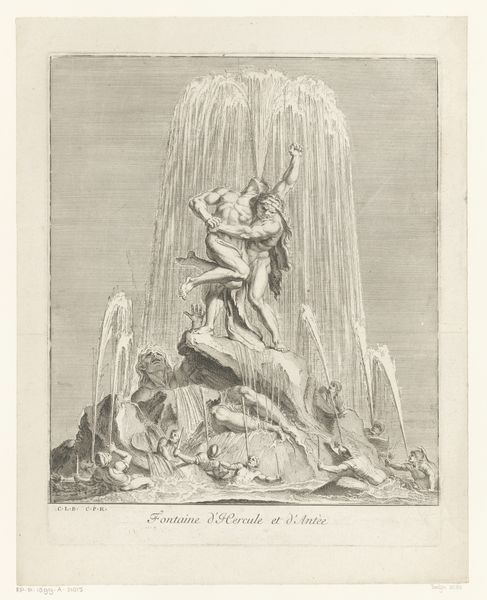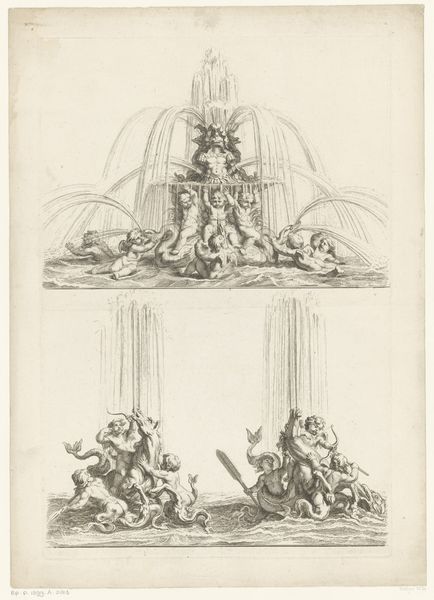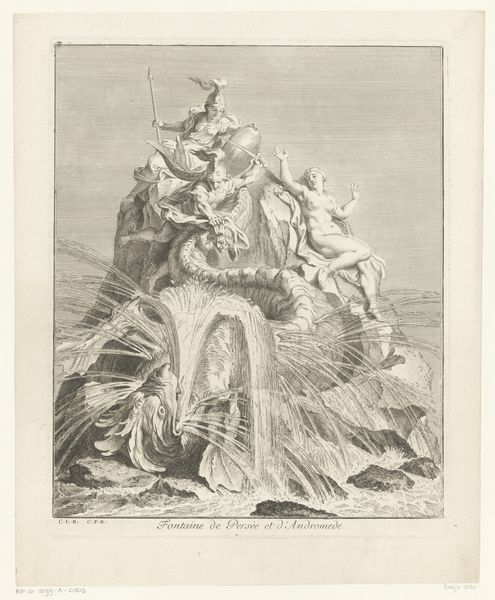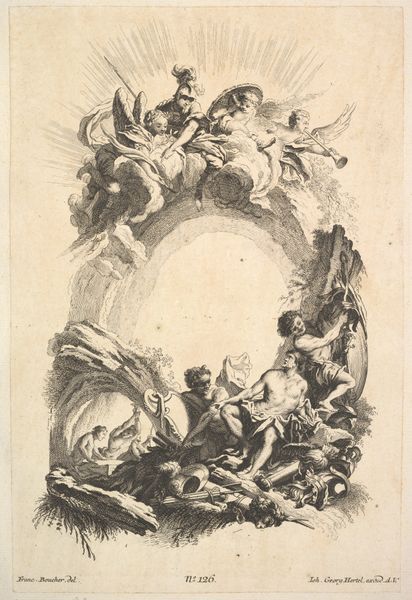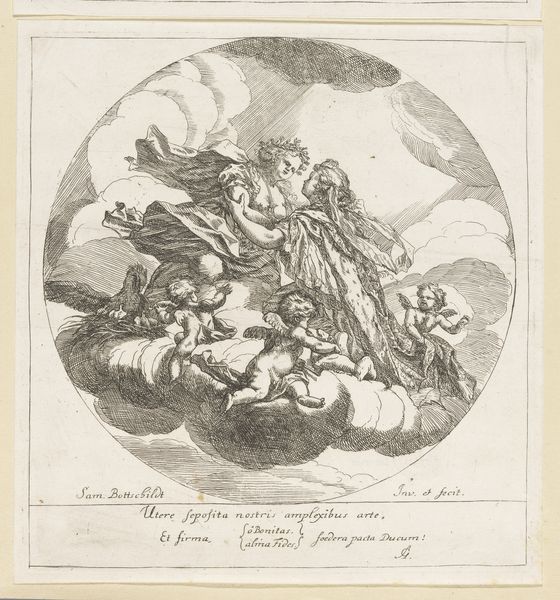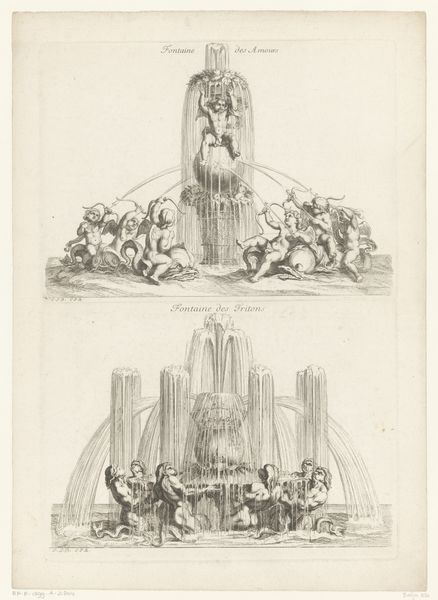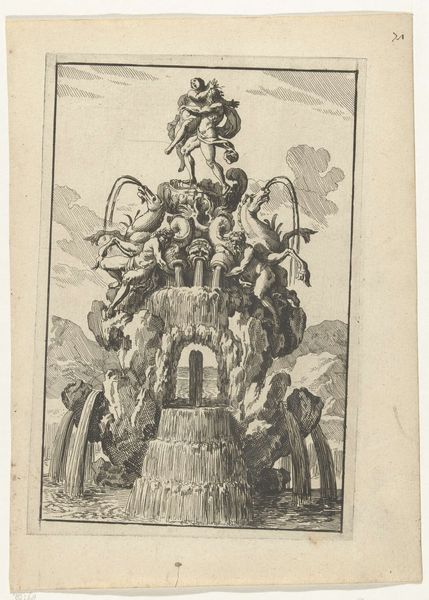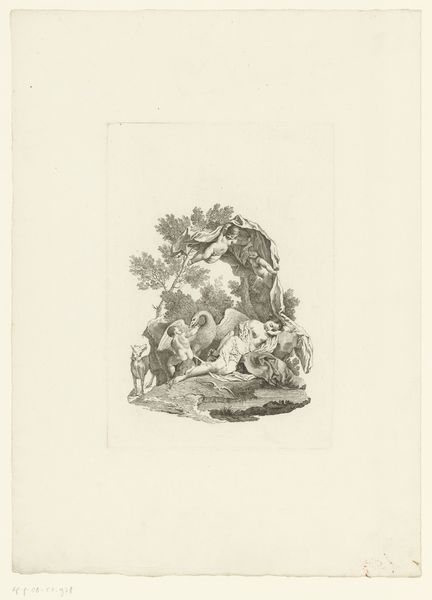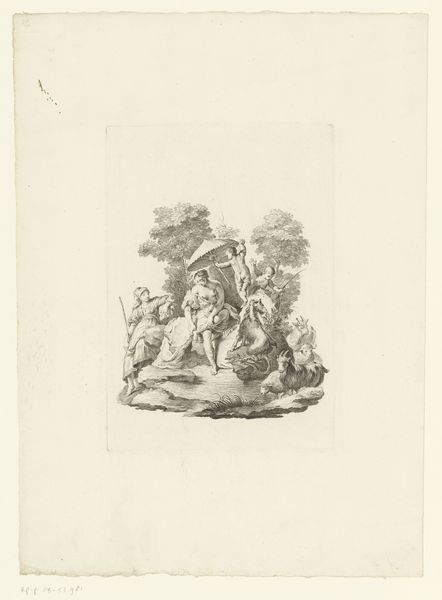
engraving
#
allegory
#
baroque
#
old engraving style
#
landscape
#
figuration
#
history-painting
#
engraving
Dimensions: height 429 mm, width 291 mm
Copyright: Rijks Museum: Open Domain
Editor: So, this is "Fontein van de muzen," or "Fountain of the Muses," an engraving made between 1672 and 1686 by Louis de Châtillon. It’s filled with figures and dramatic water features; the textures look very detailed and it gives it quite an opulent feel. What's your interpretation? Curator: It’s important to consider this engraving within its socio-political context. These kinds of images served a distinct public role, shaping perceptions and promoting particular ideologies. Given that the engraving showcases the Muses and is from the Baroque era, it's not merely decorative. Think about it: what message was the artist trying to convey, and to whom? Editor: Perhaps it's about celebrating knowledge and the arts? Or maybe even about displaying wealth? Curator: Wealth, yes, but it is tied with status and political clout, absolutely. During this period, artistic patronage was a potent form of political expression. Depictions like these projected power, refined taste and access to classical learning. The act of commissioning, collecting, and displaying such pieces played into the theatre of absolutist power. Who do you think its intended audience was? Editor: Perhaps wealthy patrons, or those connected to court? And maybe prints like these served as status symbols? Curator: Precisely! They broadcasted cultural capital to a select audience. How might such images influence public opinion or consolidate power? Consider the role of institutions, like the art market or the royal academy, in validating these aesthetic choices. Editor: It's fascinating how this engraving is not just about the aesthetic beauty but also about how art, power and politics were intertwined! Curator: Indeed. It is essential to view these pieces as agents within a broader socio-political play, shaping perceptions and reinforcing power dynamics. Understanding the artwork becomes enriched by looking at social history!
Comments
No comments
Be the first to comment and join the conversation on the ultimate creative platform.
